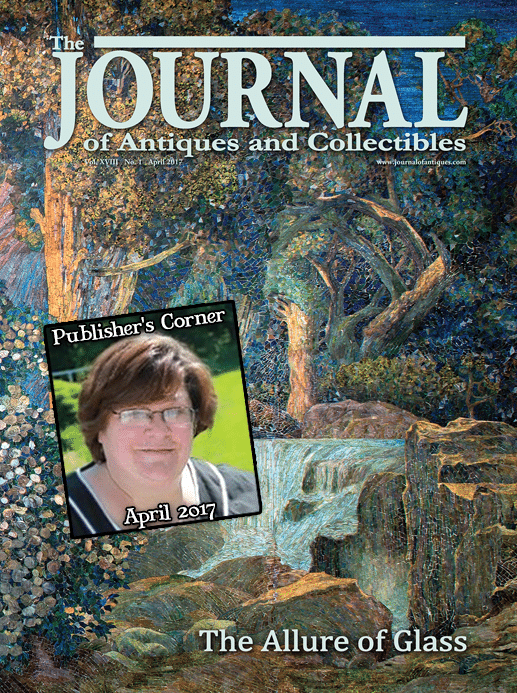A World Affair with Glass
by Maxine Carter-Lome
I hope I am not alone in loving the new PBS mini-series, Victoria, a romantic dramatization of a young Queen Victoria at the rise of her monarchy and through her courtship and marriage to Prince Albert. Their love story and Victoria’s continued devotion to him even after his death is legendary, but this mini-series also gives you a view inside their private life as a proud and intelligent man struggles to find his place and power as Prince Consort in a realm that refuses to accept and acknowledge him as a co-monarch.
Prince Albert eventually found his causes in educational reform and the abolition of slavery, and is widely acknowledged by history as making many progressive changes that positively impacted the quality of life of England’s poor. He was also a man known to be fascinated by technology.
In 1843, Prince Albert was named president of the prestigious Royal Society of Arts, “an enlightenment organisation committed to finding innovative practical solutions to today’s social challenges.” It was during his reign as president of the RSA (a position he held until 1861) that Prince Albert also became President of the Royal Commission for the Exhibition of 1851, an organization he helped found to manage the international exhibition of 1851, the first “world’s fair,” held in London from May 1 to October 11, 1851.
The Great Exhibition of the Works of Industry of All Nations or The Great Exhibition, sometimes referred to as the Crystal Palace Exhibition in reference to the temporary structure in which it was held, was an outgrowth of the RSA’s annual exhibitions, and envisioned as a way to showcase and celebrate modern industrial technology and design. Although the Great Exhibition was a platform on which countries from around the world could display their achievements, Britain sought, through the endeavor, to prove its own superiority on the world stage and make clear its role as industrial leader.
The show was housed in a special building nicknamed The Crystal Palace, or “The Great Shalimar.” Designed by Joseph Paxton, the Crystal Palace was a cast-iron and plate-glass structure 1,851 feet (564 m) long, with an interior height of 128 feet (39 m). The invention of the cast plate glass method in 1848 made possible the production of large sheets of cheap but strong glass. Its use in the construction of the Crystal Palace created a structure with the greatest area of glass ever seen in a building; its clear walls and ceilings that did not require interior lights astonished visitors. The Crystal Palace housed 26 acres of exhibition space and included the wares of 157 glass exhibitors. The use of glass architecturally and the gathering of glass exhibitors from all over the world in one place focused world attention on the technological and design developments of glass.
Glass continued to shine at subsequent world fairs. The Gillinder Glass Exhibition at the 1876 Philadelphia Centennial Exhibition was one of the top attractions at the World’s Fair that year. People could watch the glass being made, buy pieces to take home as souvenirs, and personalize their order with engraving. According to the Gillinder Glass website, over 100,000 glass slippers were sold as souvenirs of the fair, launching the popular trend of acquiring and collecting Gillinder Glass.
At the 1893 World’s Columbian Exposition in Chicago, the Libbey Glass Company erected a completely transparent, shining glass exhibition building designed to resemble a glass palace. Inside, the glass-making process was displayed in its entirety for the fairgoers, from its initial manufacture to the intricate arts of glass blowing and cutting. With shelves full of glass objects, from cut glass vases and bowls to spun glass ceiling coverings and tapestries, and walls covered with mirrors, it was a breathtaking building that saw more than 2 million fairgoers through its doors.
Also at the 1893 World’s Fair, Louis Comfort Tiffany demonstrated his company’s artistry and craftsmanship by erecting a chapel interior inside his father’s Tiffany & Co. pavilion in the Manufactures and Liberal Arts Building. Installed as a showpiece, it included six ornately carved plaster arches, 16 mosaic columns, an electrified ten by eight foot emerald glass chandelier in the shape of a cross, a marble and white glass mosaic altar, a dome-shaped baptismal font, and several windows of Tiffany glasswork built on the mosaic system displaying Christian themes. Visited by 1.4 million people it was greatly admired, brought international attention to Tiffany, and won 54 awards.
Some of the grandest and the most trivial glass designs produced in Europe and the United States over the past century were seen first in world’s fairs. In many respects we have Prince Albert to thank for that. His vision for a world exhibition to showcase modern technology and design put the architectural possibilities and artistry of glass on world display, creating a recorded and collectible history of glass design, innovation, and artisanship.
This issue is devoted to the artistry and collectability of glass. Inside you’ll read about the history of Dorflinger and cased glass, get the curators’ insight into upcoming Tiffany glass exhibits at The Queens Museum and Corning Museum of Glass, learn about upcoming glass shows and conventions and find an extensive list of glass clubs and museums in our Glass Directory that welcome your interest. Thank you to the many glass clubs and museums who contributed to this special issue.
-
- Assign a menu in Theme Options > Menus WooCommerce not Found





Related posts: